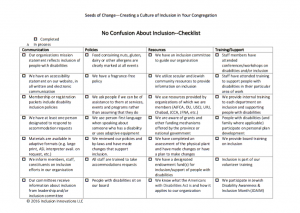Pride in Three Parts
Part 1: My remarks at Open Door Clinic’s Long Term Survivor Day, June 5, 2019
So without comparing notes in advance, I bring to you a message of hope, and surviving and thriving. I was going to talk about lighting a candle, and we already have:
Open Door. What a great name. When others wouldn’t open their doors. You did. You made it possible for people to be here. To be alive. To survive. To thrive. When no one thought that was possible.
am not sure why I am your closing speaker. I consider myself an ally. Is that enough? Maybe. Hopefully. I really struggled with what to say. Now we know.
In my tradition there is a blessing for this moment. This very moment. Allow me. Baruch atah Adonai, Eloheinu Melech Ha’olam, shehechianu v’ki’imanu, v’higianu lazman hazeh. Blessed are You, Lord our G-d, Ruler of the Universe who has kept us alive and sustained us and enabled us to reach this very moment. And we might end with Lchaim, to life. Let’s all say that together. And loudly. And proudly. L’chaim!
Last night I saw Falsettos. It whitewashed the fear of the initial AIDs crisis or epidemic or whatever. Thank you to Hugh for bringing some of that history back. In real terms. GRID. I forgot I remembered that.
I remember. I remember the fear. I remember sitting at friend’s bedsides. I remember trying to figure out how to educate our kids. I remember the unnecessary theological debates. Even with 4th graders. I remember the news media wondering whether it was safe to go to public swimming pools. Or to public school. Or to someone’s home. I remember worrying about blood transfusions. I remember Matthew Sheppard. I remember getting my own AIDs tests as a sexual assault survivor. Every six months. Until the week before I got married.
I remember working with Julie House, a Catholic Hospice Shelter for AIDs patients, in Lowell, MA. I remember the 5 year old who was born with AIDs and who all she wanted for Christmas was a caboodle. My own five year old daughter gave her hers. On Christmas Eve. She died on Christmas Eve. I still get teary eyed. I remember going to buy pot for another resident. Remember when pot was illegal? Imagine that headline, priest and rabbi arrested in drug sting. He’ll deny it but there were enough of us around who remember the story. We were lucky. And naïve. We didn’t get caught.
That’s part of what we are here today to do. To remember. To never forget. And to celebrate.
You are here. You have survived. You are continuing to survive. Our prayerbook contains these words, “Merely to have survived is not an index of excellence. Nor, given the way things go, Even of low cunning.” (Page 331, Gates of Repentance). No, surviving is not enough. My wish and my prayer for you. (I get to do that. I’m a rabbi) My real hope is that you are thriving.
Peter Yarrow in a song written about a different survival sang these words of hope about lighting a candle:
What is the memory that’s valued so highly
That we keep it alive in that flame?
What’s the commitment to those who died
That we cry out they’ve not died in vain?
We have come this far always believing
That justice would somehow prevail
This is the burden, this is the promise,
This is why we will not fail.
Peter Yarrow
He wrote another one. Don’t worry. I’m not going to sing it:
Carry on sweet survivor
Carry on my lonely friend
Don’t give up on the dream
Don’t you let it end.
Carry on my sweet survivor
Though you know that something’s gone
For everything that matters, carry on
You remember. You never forget. You are forever changed. And because of that you practice audacious hospitality. Your door is open to everyone. Whether it is in Elgin, or Aurora, Jolliet or DeKalb. Wherever you need to be. Whenever you need to be there.
One of my favorite readings is a poem about opening the door of a synagogue. I’ve changed it for today:
May the door of this organization be wide enough
to receive all who hunger for love, all who are lonely for friendship.
May it welcome all who have cares to unburden,
thanks to express, hopes to nurture.
May the door of this institution be narrow enough to
shut out pettiness and pride, envy and enmity.
May its threshold be no stumbling block
to young or straying feet.
May it be too high to admit complacency, selfishness and harshness.
May this be, for all who enter, the doorway to a richer and more meaningful life.
From Mishkan T’Filah
Moses lived to be 120 years old. Another traditional blessing in Judaism is may you live to be 120. My prayer is no. My prayer is that OpenDoor doesn’t have to live to be 120. That we eradicate AIDS and other sexually transmitted diseases and you can afford to go out of business. That would be the best.
Part 2:
I feel like I have been an ally for a long time. When I was at Tufts and people in the Gay_Straight Alliance wore blue jeans one day to make the point that you can’t tell who is gay or straight. To some of the work I did early on with AIDs patients. To hosting a vigil after the Pulse Night Club shooting. To speaking at a U-46 School Board meeting about transgendered bathrooms.
But why. It is simple. In the Torah, in Genesis it says, that we are created b’tzelem elohim, in the image of the Divine. And as I usually say, quoting the u-46 mission statement “All means all.” That’s right. There is a spark of G-d in each of us. All of us. Period. So gay, straight, bi-sexual, trans, intersex, whatever. Who am I to judge? Who am I to care? Period.
Recently there have been two news stories (really more, but two I am going to address directly.
The first: In February, the United Methodists voted to not have LGBTQ+ clergy or to allow people to get married in the church. The Illinois conference is voting again this week. Where any of that will lead I don’t know nor can I really weigh in on it.
The second: At a liberal Orthodox yeshiva, the rosh yeshiva, the head person made a decision to not ordain a young man who is openly gay. Again, it is not for me to speak about the Orthodox world. But I am proud to say that with many other rabbis, we funded this young man’s trip to Israel to be ordained there by an Orthodox rabbi,
There must be room for every one in the BIg Tent of Judaism. Everyone. All means all. That is the symbol of the rainbow. The sign of the covenant that G-d would never destroy the world.
Part 3: Leviticus
We just finished reading the book of Leviticus this week. In Chapter 18 there is a verse that some consider “the troubling verse”. This is the reason many believe that homosexuality it banned. But what if it is not. With thanks to Rabbi David Greenstein who was the Rosh Yeshivah at the Academy for Jewish Religion, who taught these verse, let’s look at them. He believes by looking deeply at the grammar of the verse, it really is a polemic against gang rape. See your high school English teacher was right; it pays to know grammar!
It is really an elegant graceful, grammatical argument and the authors of the King James translation missed it. So for over 500 years there has been needless pain and suffering for LGBTQ folk.
I have quoted his argument before. But it needs repeating. Again. This very week.
“Leviticus 18:22 and 20:13 have been read for millennia as the Torah’s comdemnation of homosexuality. How should we read these verses as we enter the sacred sphere with “zot,” with our conviction that we carry the Divine Presence with us – straight or queer– as we are? I submit that we may read these verses in a new way, a way that removes them entirely from the topic of homosexuality. The verse in Leviticus (18:22) is comprised of three elements – persons (V’et Zachar), forbidden acts (lo tishkav mishkevei ishah), and a term of condemnation (to’evah hi). Let us examine each element in reverse order…
When we consider the first part of the verse, the part that mentions the persons involved in the forbidden act, we read the phrase “And with a man” / “V’et zachar.” Now, the particle et may indicate the object of an action.
Until now our verse in Leviticus has been read to mean that a male is prohibited to make another man the object of his sex act. But this word can have another meaning. The first place where it is unambiguous that the word et is being used in another way is in the verse, “And Enoch walked with (et) the Almighty…” (Genesis 5:24).
In that verse it is clear that the particle does not signify an object indication. Rather, it means “along with.” Now we may read the verse very differently:
v’et zachar And along with another male lo tishkav you shall not lie
mishkevei ishah in sexual intercourses with a woman to’evah hi it is an abomination.
There is no prohibition of homosexual acts of any kind. Rather, the Torah prohibits two males from joining together to force intercourse upon a woman. This is a to’evah because the introduction of the second man completely transforms the act from a potentially innocent act into a manipulation that degrades the act of intercourse and makes the woman subject to violence and objectification.”
http://www.on1foot.org/sites/default/files/Interpreting%20Leviticus%20-%203%20part%20lesson_0.pdf
When I first studied this with Rabbi Greenstein all I could say was WOW! Yasher koach to Rabbi Greenstein. I wonder how much pain and suffering of those in the LGBTQ community could have avoided if King James had better translators.
So this month be proud. Be clear that you are created in the image of G-d. And that you are loved by that G-d with an infinite love. Period. All means all.

